#michellemortensen
Explore tagged Tumblr posts
Text
Cairo City of the Dead: Extraordinary Coexistence_Moataz Faissal Farid
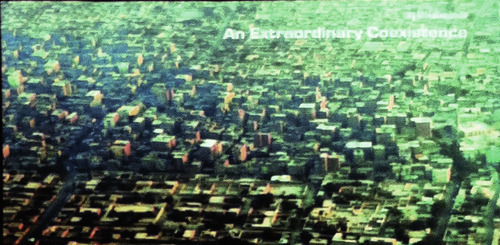
In Cairo, the City of the Dead is a place where the living reside among the dead. The history of Egyptian burial is part of what makes this “extraordinary coexistence possible. Tombs and cemeteries were placed on the West side of the Nile River; they chose the West based on the setting of the sun as a symbol of death. For many families did not live close to these burials sites and the long journey necessitated a place to stay and rest by the gravesite so small courtyard spaces were built around the tombs so families could rest there after their long journey. The owners of these tombs, the families of the deceased, also hired tomb guardians essentially that would live in these courtyard spaces and maintain and protect the tombs while the families were away. Sacredness is really subjective, and those who build the tomb responding to conditions of the time determine the relation of the living to the dead.
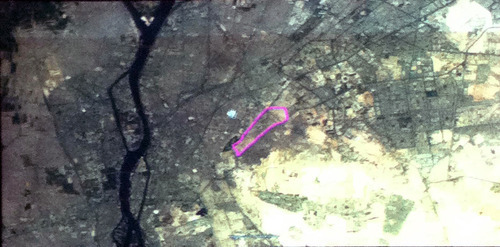
From the period of 1250 to 1982 the population of Cairo grew, and people living on the eastern bordered of Palestine escaped to Cairo during conflict however there were few affordable housing options in Cairo so this transient population began to join the population living among the tombs.
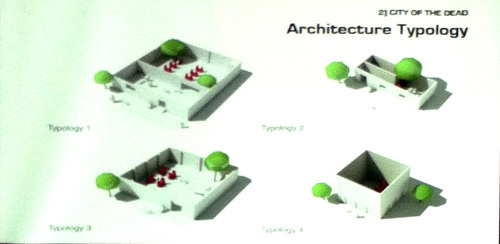
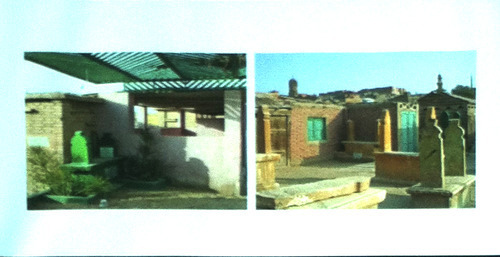
This area is at the intersection of city centers of Cairo and it is considered very much a part of the city. 8 million of the 18 million people of Cairo live in slum conditions. and much of the land is taken up by informal settlements either on agricultural land, desert land, or on deteriorated historical sites. The city of the dead ids located between the informal historic settlements and the desert settlements. The City of the Dead is made an island because highways that make an invisible wall surround it and there is no pedestrian activity along the highway. The population of the city of the dead is also isolated. The general population of Cairo sees the people living in the City of the Dead as sacrilegious, disrespectful, and profane. However the City of the Dead is a high functioning community with schools, hospitals, mosques, and public open spaces. Also the living conditions here are much better than those of the surrounding slums that are extremely dense, overpopulated, and polluted. The people in the City of the Dead prefer to peacefulness and would rather live in close proximity to tombs than move to one of the slums.
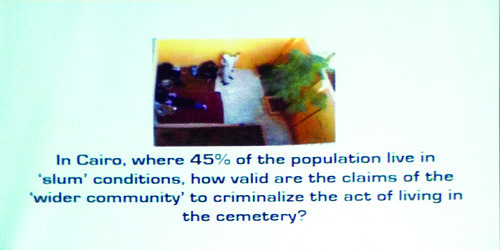
Moataz has spent time studying the lives of people in the City of the dead in order to understand has this superposition came to be. The future plan for Cairo 2050, includes completely wiping out the City of the Dead dislocating the population of 800,000, leaving only the most important historic landmarks and implanting a completely unrealistic paradise called Cairo Central Park.
Why is the vibrant community ostracized and need to be wiped out just because people are living among the dead? In a time when mutlifunctionality and ecosustainability are so important, the unplanned phenomenon of coexistence that occurs in The City of the Dead is a compelling case to study.
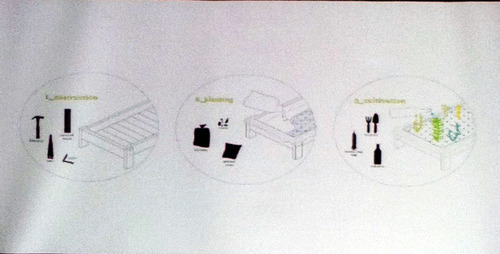
Moataz collaborated with a group of young Italian architects liveinslums (liveinslums.org) on and ecological urbanism project in the city of the dead. Workshops were held with the community to build a sustainable landscape, or micro green corridor, through local produce of food and energy through urban farming in the many courtyards and open spaces in the city. This reaps social and economic benefits for the current population by creating a productive market for both the inhabitants and visitors. Growing plants has given many residents a great sense of pleasure and when fruit is finally produced there is much joy and celebration among the community for their accomplishments. The interaction with outsiders in the marketplace is also beginning to legitimize this stigmatized community. People who had only passed by before now can engage with the community and see that it is a vibrant and healthy area that should be reconsidered by Cairo as a successful, integral, and possibly essential part of their urban community.
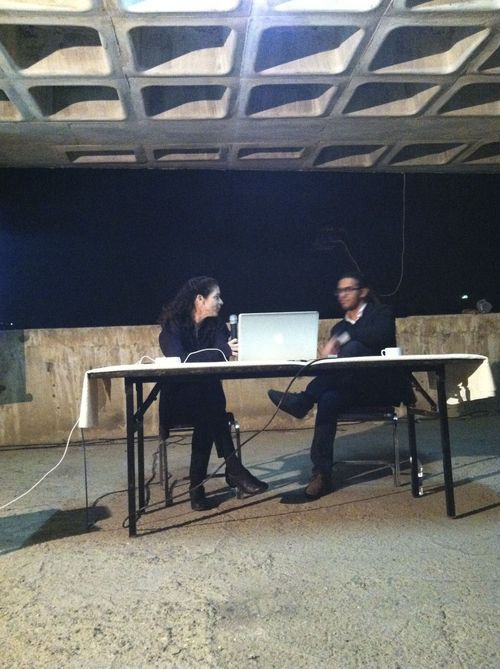
Michelle Mortensen
0 notes
Text
Saba Innab - Artist and Architect
Saba Innab is an artist and architect who had the opportunity to work on the reconstruction master plan of Nahr el Bared Camp, a Palestinian refugee camp in Lebanon. The project was created by off-putting circumstances, the site had been an existing refugee camp that was attacked and completely demolished during civil war, and then with outrage from the public and pressure from the public, the military of Lebanon was compelled to rebuild. The project deals with such issues as the temporary permanence of the refugee camps and its inhabitants lifestyle. Saba spoke of pervasive feelings of suspension and waiting for the 30,000 displaced refugees, and for her as she worked on a project for a client (the military) who did not seem to want her work to ever be realized. Through incessant tie ups with the bureaucratic construction approval process in the country and resistance from politicians, from 2007-2013 only two of the eight phases of reconstruction have been completed and only a small portion of the original camp size has been rebuilt.

With these many set backs Innab expressed that many of the refugees, with time, have begun to let go of their land. Although this project was discouraging on both a professional and personal level for Innab it spawned the project, "How to Build without a Land." Saba Innab took time to dissect the experience of the refugee camp in a project of tracing an imaginary boundary line, the limit, the edge defined by absence. Her subject was the absent state of Palestine and the borders this "territory". The paradox made evident was of one attempting to design something temporary spaces that inevitably become permanent. The way you build without a land is to abandon the land, and she paints utopian structures, admittedly embedded with dystopia, suspended above the land in order to explore a space where one may dwell when the have no place to live.

The text below the painting is a pursing out of the layers of meanings embedded in the Arabic root-word “سكن” which translates to "dwell". To stay in peace, to be still, to be in peace, to reflect, to settle, to stop, his soul has stopped, pain had departed him. Innab notes that many of these translations call up imagery of the body, the soul, and death; ultimately, “سكن” reflects the idea that one can only dwell when they are dead. The worlds also embodies the end of things and their limits. As Inaab puts it, her investigation reveals the impossibility of the act of dwelling.
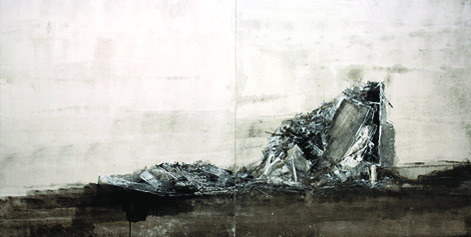


Michelle Mortensen
0 notes
Video
tumblr
Morning Call to Prayer_Amman, Jordan
Michelle Mortensen
0 notes